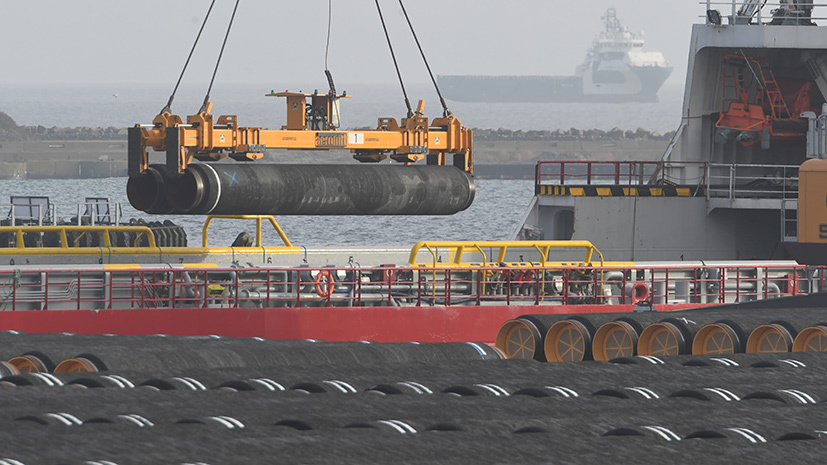Swedish MMT's Stril Explorer vessel is conducting seabed research along the Nord Stream 2 gas pipeline.
“The vessel is conducting concerted research on the seabed along the gas pipeline southeast of Bornholm in the exclusive economic zone of Denmark for Nord Stream 2,” TASS quoted the press service of the pipeline operator.
Nord Stream AG, the operator of the Nord Stream gas pipeline, in 2017 entered into a three-year contract with MMT Sweden for the external inspection of pipes of both threads of the Nord Stream gas pipeline laid along the bottom of the Baltic Sea from Russia to Germany. As reported by Nord Stream, the work is mainly carried out on board the ship Stril Explorer. They include "visual inspection and instrumental control of pipelines using underwater vehicles with remote control over the entire length of the route." Also inspected are sections of the gas pipeline deepened into the ground, and intersections with cable lines.
“These works are carried out with the aim of collecting data on the state of both pipelines, as well as auxiliary equipment. This information is used in assessing the integrity of pipelines, and it will complement the data collected during previous inspections, ”the company said in a statement.
At this stage, in the waters of Russia, work continues on the installation of stone sketches to ensure the stability of the gas pipeline on the seabed. Later, similar work will begin in the waters of Finland and Sweden.
To date, more than 2,300 km of the gas pipeline have been laid, which is equivalent to 93%.
- globallookpress.com
- © Stefan Sauer / dpa
Nord Stream 2 is a gas trunk pipeline under construction with a total capacity of two lines of 55 billion cubic meters per year from Russia to Germany through the Baltic Sea. It passes through exclusive economic zones and territorial waters of five countries - Germany, Denmark, Russia, Finland and Sweden. The construction is opposed by a number of European countries, in particular Poland, Lithuania and Latvia. In addition, Ukraine needs to stop the project, fearing a loss of revenue from the transit of Russian gas, and the United States promoting its liquefied natural gas in the EU.
Opponents of the construction claim that the pipeline threatens Europe’s energy security, while Russia has repeatedly explained that Nord Stream 2 is an exclusively commercial and not a political project.
Recall, on December 20, US President Donald Trump signed the country's defense budget, which, among other things, involves restrictive measures against Russian gas pipelines in order to "protect Europe’s energy security." In particular, ships sanctioning pipes at a depth of more than 100 feet (30 meters), as well as companies that sell or rent such ships, fall under US sanctions. After that, the Swiss company Allseas, a subsea plotter for Nord Stream 2, said it would suspend work on the project due to threats of sanctions. The company diverted its vessels - Solitaire, Audacia and Pioneering Spirit - from the construction area in the Baltic Sea.
Russian Foreign Ministry spokeswoman Maria Zakharova, after imposing sanctions, said Washington was trying to ban other countries from developing their economies. She added that Russia will respond mirrorly to “such unfriendly attacks.”
The response to US sanctions was also announced by the press secretary of the President of the Russian Federation Dmitry Peskov.
“In any case, such steps do not remain without reciprocity. How and when this will be done is more a matter of Russia's national interests, ”he said, adding that they will not be able to stop US construction through sanctions.
Russian President Vladimir Putin at a meeting with German Chancellor Angela Merkel confirmed that the project will be completed.
“Yes, we will certainly be able to complete it on our own, without attracting foreign partners. The timing question is the only question that arises in this regard, ”he said.
Alexey Miller, Chairman of the Gazprom Management Committee, explained that the completion of the project will require a bit more time, but we don’t have “technological obstacles to do this on our own”.
According to information published on the Nord Stream 2 project website, it remains to complete the construction of a gas pipeline in Danish territorial waters and a small part of the German section.

